
Point to Paper – The Story of the Norwegian Longnosed Earmouse
In the past, people drew wisdom from myths and stories. It was often all they had. It was a way to create meaning in what they didn’t understand. Contrary to what we might like to believe, it is still the case that science and rationality are far from able to explain everything. We still need the stories. I have a weak spot for those who are able to tell these stories with creativity and color.
There has always been a rich heritage of storytelling in Norway. The tales about the Norwegian trolls are well known. There also exists a more down to earth storyteller tradition. It is often overlooked. It has always existed, but became popular in Norwegian literature in the 1960s. Local storytellers, with an eye for the strange things people do and the peculiar lives they live, have always loved to put what they see in to words. The best of them have an ability to tell tales with humor, curiosity and passion. It is a genre that is often misunderstood and undervalued. Most places on earth have local storytellers. The Norwegian stories are often from small towns and desolate places and about hard working people and their everyday lives.
One of the best storytellers I know was Kjell Aukrust. He was also an amazing artist and an gifted illustrator. During his lifetime he created a quirky universe of people and animals. Aukrust often took the perspective from small town Norway. He also told stories about the tensions that often emerge when people from the country meet people from the city. Aukrust made fun of them all. He mixed together reality, caricature, folklore, culture, myths and wild ideas. The tone is understatet and might seen simple and even naive, but Aukrust knew both the city and rural Norway well. He always had intelligent humor.
His best known work is the story behind the animation movie “The Pinchcliffe Grand Prix” from 1975. If you haven’t seen it, you have missed one of the greatest animation movies of all time. It captures many aspects of rural life in Norway in the second half of the 20th century. That does not mean that any such place ever excisted. Still, for anyone born in Norway between 1900 and 1980, the people and their everyday business is very recognizable. Many with me, never understood why Aukrust wasn’t asked to make the official mascots for the winter olympics at Lillehammer in Norway in 1994. He was the obvious choice if they wanted the voice of the people. He was probably too radical. His alternative book about the winter olympics was an elegant anti-story that got him in a lot of trouble with the IOC. That made him my hero.
The story you are about to read is greatly inspired by the tradition Aukrust represented. There will be a follow-up post in a week or two. There you will meet one of Aukrust’s more peculiar creations, the vusvole (Raptimus Vulgaris). Aukrust loved to play with both Latin and imaginary animals. The strange vusvole will in the upcoming post be compared with an even more bizarre little animal. Today’s story is dedicated fully to the latter. It is about the origin and the creation of the mystical longnosed earmouse (Rodentia Elephandae Norwegicus). The vusvole and the longnosed earmouse might seem similar, but they are very different creatures with very different roles to play in nature.
Today’s post will also explore happiness and meaning. It is a story about life by the sea. You will get to study the longnosed earmouse in its natural habitat. You will even be introduced to one of them. She is very cute and is called Pernille. She is a perfect example of the species. Never heard of one? They are very rare. Our depictions of the them are unique. If you fall in love with Pernille, you can also learn how to bring the beautiful little creatures to life yourself. All you need is a dip pen, iron gall ink (or any other black ink), colored pencils and quality paper .
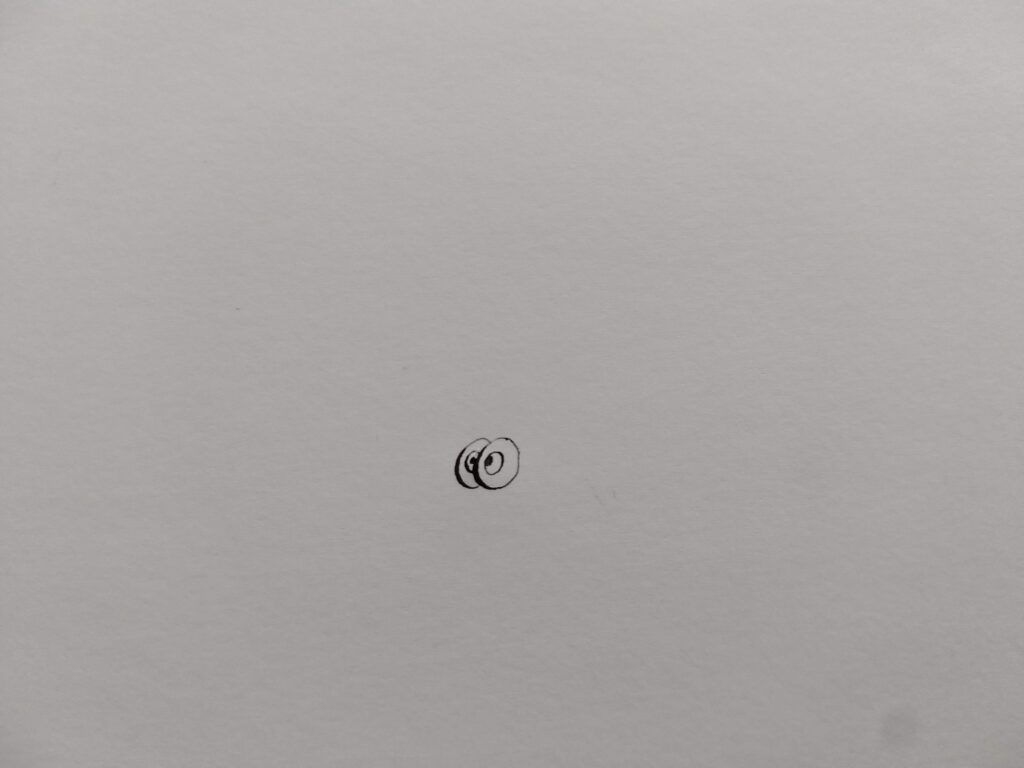
The longnosed earmouse lives under most wooden piers by the sea. They were first discovered in Langesund. Langesund is a little fisherman’s village. You can find the village on the southern coast of Norway. The tiny and strange animal only comes out after dark. The summer guests rarely experience them. Pernille is like most longnosed earmice – she is an anxious little creature. Almost no one has ever seen one. Some claim they were born from an overly vivid imagination. Others point out that if you have ever experienced your hearing becoming clear with a pop during the night, you just might have had a visit from a longnosed earmouse.
Why are they only found under wooden piers? I will try to explain. It is one of nature’s strange occurences. It is what can happen when coincidences meet in the least likely of places. Life on earth is often like that. Evolution’s most incredible adaptations also often happen because there exists an abundance of some kind of a raw material that no one else has seized.
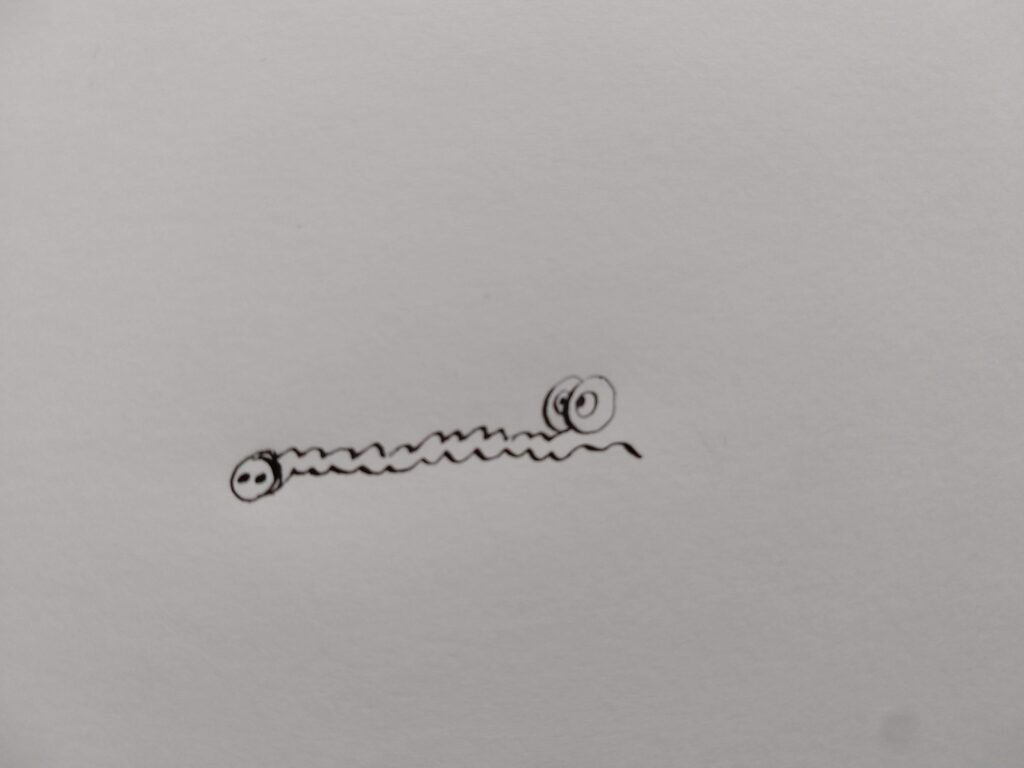
Have you ever wondered why your ears sometimes pop when sleep by the sea? Have you ever experienced the marvellous clarity of sound that follows? Have you ever wondered why you sometimes get a lovely tickling feeling in your body when you wake up on a pier? Mayby you always thought it was the fresh morning air. The morning air by the sea is certainly refreshing, but as you soon will see, the explanation might be entirely different.
To experience this sensation you need to have a habit of sleeping on wooden piers. Not all people do. For those of you that have spent the night in this way, you might not have connected all the dots (pun intended). I will now try to enlighten you. I hope your are not one of those people who squander away the opportunity for morning happiness and choose to sleep through the morning and far in to the day. You can just as well stop reading. You will probably not understand what I am trying to say here. This story is mainly written to all you early birds that share a secret that most sleepy heads will never know.

The longnosed earmouse is a tiny little creature. It is a hybrid between a shrew and sea urchin. They have preserved the shrew’s silky fur and further developed the flexible nose. They have also kept the sea urchin’s love for the sea and their solution-oriented way of thinking. Strangely, none of this would have happened if people hadn’t built wooden piers and hadn’t chosen to sleep on them. In Langesund, like many other fishing villages, there are many wooden piers. Sleeping on them has occured since the dawn of time.
This is excactly where you might find the creatures. It would also never have happened if humans hadn’t been drawn to the sea and hadn’t had earwax in their ears. Earwax, as you will see, plays an importent role in this story. Also, if you weren’t aware of it, the human ear is actually closely related to the conch shell. They are irrefutable evidence that humans originally, at least partly, came from the sea.
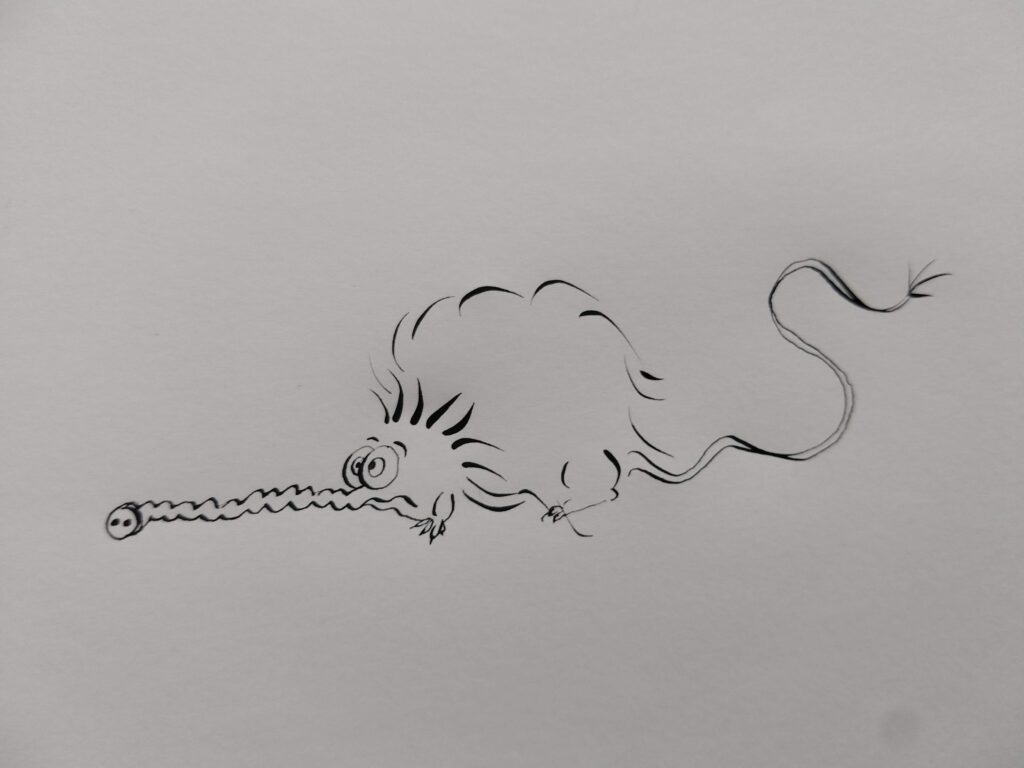
One night a long time ago, a miracle happened. It was a night just a short time after humans had begun to make piers by the sea and begun to sleep on them. People didn’t do it because they loved sleeping by the sea. It was, as it often is, something done out of necessity. When the fishing season was at its best, there was no free time to spare between the good catches, the gutting of the fish and the new working day. Busy fishermen, who had to provide for their families, obviously did not have time to go home to sleep. So what does a fisherman do that only has a few hours to spare between the last gutted fish and the next catch? He lies down on the pier, with his clothes on, and with all his earwax in place. The value of sleep far outweighs anything else. A month or two in the same work clothes, combined with an absence of washing water and soap, provides the perfect breeding ground for an abundance of both earwax and other things. Of course, that is no longer the case, so the miracle would not have happened today.

Some call it evolution, but something else happened in prehistory that can also explain it all. Another night, even longer ago, Poseidon, the god of the sea, had made a bet with Ninkilim, the god of mice and rats. The god of mice and rats had challenged the god of the sea and won. Poseidon was thus indebted to Ninkilim. Ninkilim would eventually collect his debt. He demanded to take part in the creation of man and reap the benefits of his contribution for eternity. Poseidon was proud and frustrated. He resented being in debt to Ninkilim, but knew he had to honor his debt. He hatched a plan. He thought he was giving Ninkilim an impossible challenge. In this way he could pay his debt without losing face.
During the creation of man, Ninkilim was given the freedom to make holes on each side of peoples heads. The conditions were that the holes had to be useful, created in the image of the sea and make man even more beautiful. If Ninkilim could make this happen, Poseidon was willing to let him harvest the benifit for ever. Poseidon smiled to himself and was sure it would be impossible.
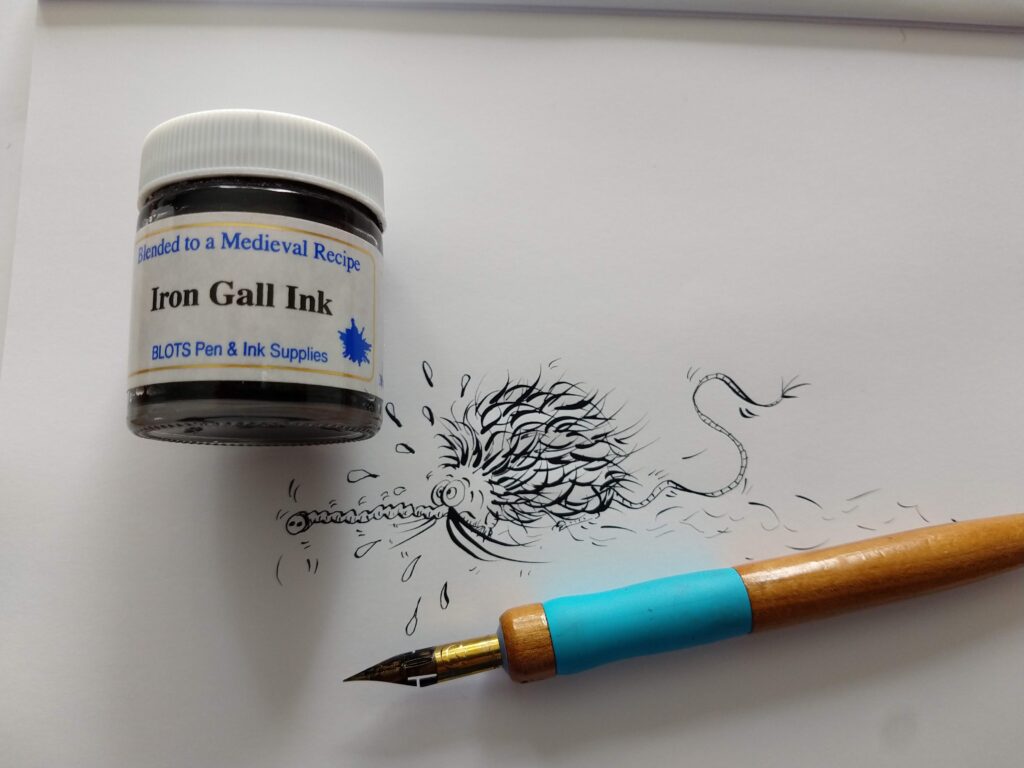
Ninkilim was clever. He was inspired by the shells of the sea. He thought he could make people even more beautiful by attaching conch shells on either side of their heads. Poseidon had forgotten about the creatures of the land and how they thrived because of their sense of hearing. He was both surprised and envious of Ninkilim’s creative solution. Again he was petty and took revenge. He let the conch shells on the sides of the head of man secrete bitter wax. Ninkilim was not stupid and understood this was revenge. He was the god of mice and rats and was not spoiled by abundance and luxury. He secretly transformed Poseidons pettiness, and cunningly neutralized the sea god’s plan.
Ninkilim allowed one of his most faithful creatures to breed with one of Poseidon’s outcast beasts. This is how the longnosed earmouse came to be. Why the sea urchin had been banished by Poseidon, no one knows. The offspring of a the shrew and the sea urchin was the most beautiful miracle. Ninkilim gave the tiny creature, slightly smaller than a pea, a demanding task. The creature had to live off the produce from the conch shells on the heads of humans. The longnosed earmouse was perfect for the task. They fell in love with human earwax. They found it to be the most palatable food they could imagine. Ninkilim cared for all his little beings and always gave them qualities that enabled them to find happiness and meaning under the most demanding conditions.
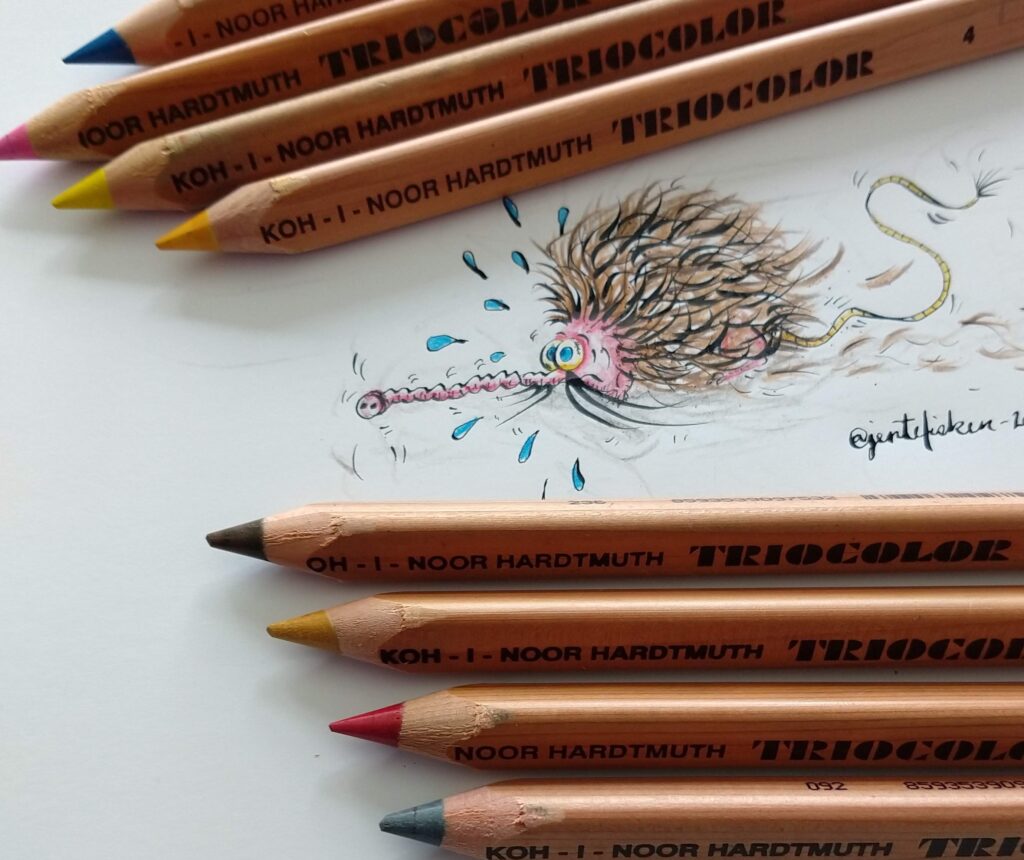
Ninkilim was afraid that Poseidon would discover his cunning solution and chose to postpone the birth of the first longnosed earmouse until the day the first fisherman went to sleep on a pier. Neither the fisherman nor Poseidon understood the happiness that occurred the first morning the first miracle took place. When Poseidon finally discovered Ninkilim’s trickery it was too late. Ninkilim had given man both more beauty and the opportunity to find happiness on a simple wooden pier.
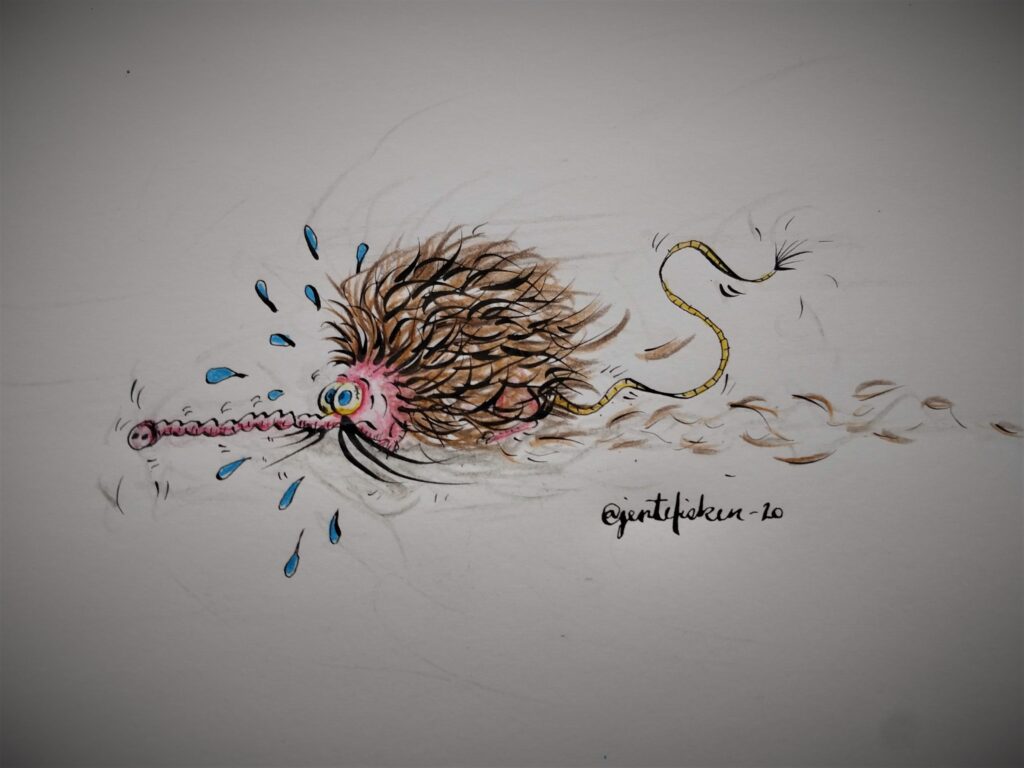
The longnosed earmouse is a master at her discreet work and contributes to human emotions even Poseidon cannot match. Every morning, when a tired fisherman gets up and feels the most soothing happiness a human can feel, he can thank Ninkilim. It is a happiness that only belongs to someone that has slept on a pier with their ears full of earwax. It is the happiness of someone that has had his ears painstakingly cleaned by a modest little longnosed earmouse. This happiness roars in his soul as he gets up and takes in the fresh morning air. At that moment, his conch shells are filled with the most beautiful melodies that can only be found in the morning by the sea. It’s the sound of waves lapping and of seagulls singing.
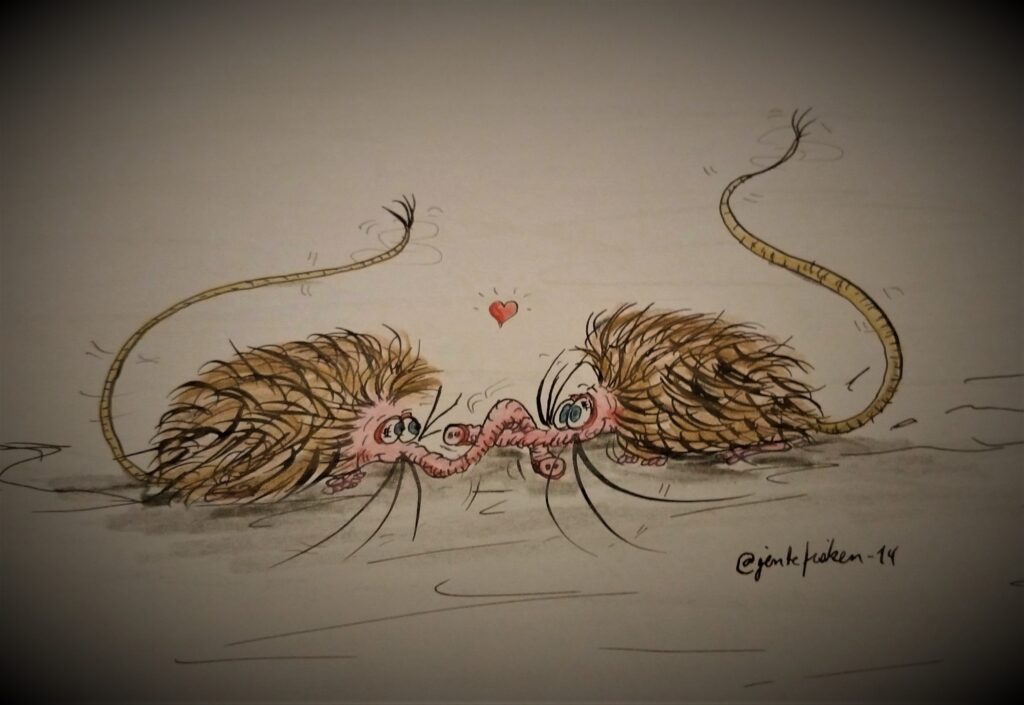
It took a fisherman to understand that something strange was going on in the night. It was a fisherman that went to bed in the evening, with his head filled with cotton wool and with a worn out body. He woke up with freshness in his soul, lightness in his head and energy in his body. He wondered about it all. How could it be? How did this healing transformation come to be? He then heard the beautiful song of the seagulls and the melodious lapping of the waves. He knew it had to be an act of a caring god.
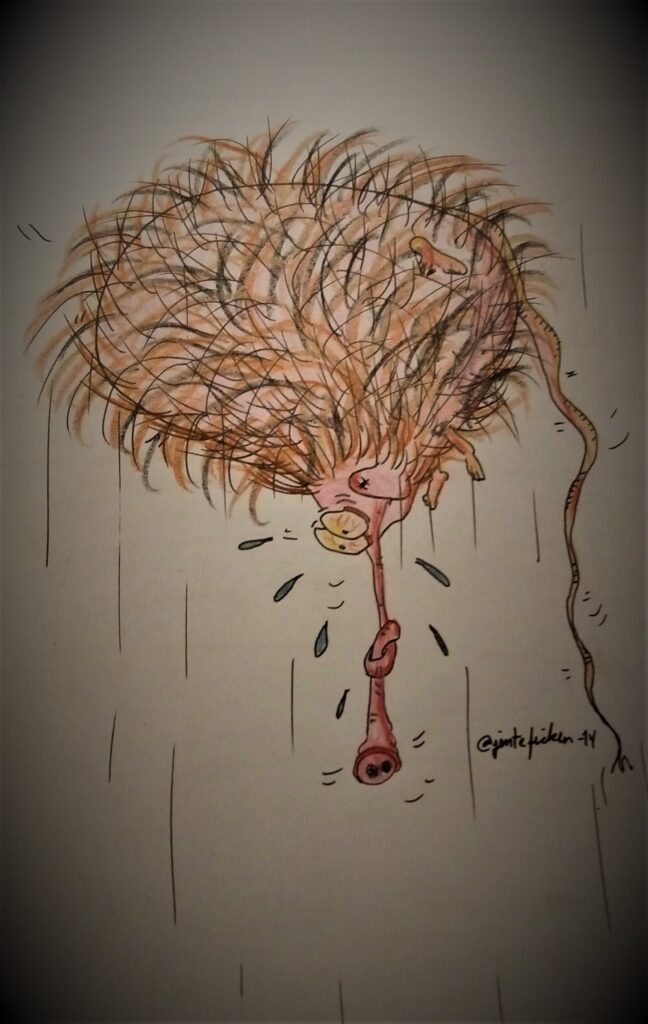
It is no wonder that fishermen love their life by the sea. They have a beautiful secret. It doesn’t take many mornings like this before they can say that their whole life was worth living. Of course the sun and the sea play a role, but the feeling of newness comes from earwax-free human conch shells. And how did they get that way? Those of us who know about the longnosed earmice under the piers of Langesund, know what’s going on.
Illustrations, photos and models
All drawings in this column and all the pictures are made by or taken by Kjartan Skogly Kversøy. References can be found as links written in blue. The longnosed earmouse, the story about it and the figure is created fully by the author of this post.